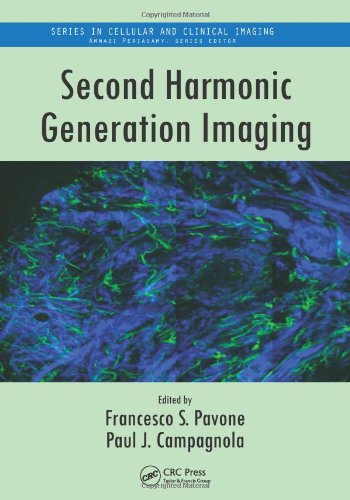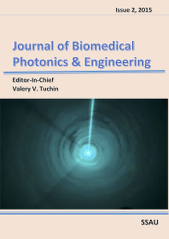Journal of Biomedical Photonics & Engineering
Call for paper
Saratov Fall Meeting 2016
26 - 30 September 2016, Saratov State University, Russia
- Symposium: Optics & Biophotonics 2016 (27 - 30 September 2016)
- XX International School for Junior Scientists and Students on Optics, Laser Physics & Biophotonics (26 - 30 September 2016)
The conference program includes:
- Plenary lectures
- Three 4-hour courses in the field of biomedical optics and biophotonics for students and junior researchers from world known researhers.
- U.M.N.I.K.: Special session on student reports on Optics, Laser Physics and Biophotonics
17.05.2016
Read more:
Current Issue
Vol 2, No 2 (2016)
- Year: 2016
- Articles: 5
- URL: https://jbpe.ssau.ru/index.php/JBPE/issue/view/145
Reviews
Optical diffraction tomography techniques for the study of cell pathophysiology
Abstract
 020201
020201


Diffuse optical mammotomography: state-of-the-art and prospects
Abstract
 020202
020202


Articles
Detection and Analysis of Heart Rate Variability in Young and Postmenopausal women in Different Postures
Abstract
Postmenopause is the naturally occurring stage in woman’s life after the permanent cessation of the menstruation longer than 12 months. The transition from the young to the postmenopausal stage impacts the variation in the heart rate. It is important to analyze and detect the variation in Heart Rate Variability (HRV) between young and postmenopausal women in different postures to understand the impact of the age and physical activities on the autonomic health of heart. The aim of this study is to (i) investigate the effect of autonomic regulations of heart rate in young and postmenopausal women in various postures and (ii) determine the possibilities for the reliable, efficient and accurate HRV analysis signal processing algorithm in detecting HRV variations between young and postmenopausal women. The experiments were performed on 25 young women and 25 old women in the postmenopausal phase. Various linear methods have been applied for analysing and detecting HRV variations between young and postmenopausal women. The results concluded that the postmenopausal group showed significantly lower (p < 0.05) values of SDNN, NN50, pNN50, RMSSD, and HRVTi than young group both in the lying and standing postures. These results indicate a decrease in the parasympathetic activity in postmenopausal as compared to the young women due to the age. Further, the performance of linear methods in detecting HRV variations between postmenopausal and young women in different postures was calculated. It is also concluded from the results that HRVi outperforms other HRV analysis methods in detecting HRV variations between postmenopausal and young women.
 020301
020301


An improved algorithm of structural image reconstruction with rapid scanning optical delay line for Optical Coherence Tomography
Abstract
A new algorithm of structural image reconstruction in Optical Coherence Tomography is described. The modified rapid scanning optical delay (RSOD) line, low numerical aperture, small angle raster scanning with consecutive averaging and multilevel digital filtering have been used to obtain high quality structural images of an onion and the nail bed of a human thumb. The proposed method significantly improves image contrast and allows visualization of small blood capillaries under the nail plate.
 020302
020302


Changes of the skin barrier and bacterial colonization after hair removal by clipper and by razor
Abstract
Background: Inappropriate hair removal increases the risk of surgical site infections which are associated with a higher morbidity and mortality of surgical patients. Here, the effects of a clipping device and a disposable razor on the skin barrier, microbial burden and surface structure were compared. Methods: Changes in bacterial colonization, transepidermal water loss, antioxidant status and the skin surface structure were investigated on the calves of 12 healthy volunteers. Measurement time points were at baseline (tbase) and 24 hours after hair removal (t24). Results: Both, the disposable razor and the clipper showed a decrease in log colony-forming units count from tbase (mean(tbase) ± standard deviation = 2.6 ± 1.27, median ± standard error = 2.6 ± 0.37) to t24 at prazo r= 0.05 and pclipper = 0.06 respectively. At t24 clipping resulted in a higher reduction of log colony-forming units (mean(t24) = 1.76 ± 0.8, median = 1.69 ± 0.23) compared to the use of the disposable razor (mean(t24) = 1.84 ± 0.85, median = 1.91 ± 0.24). Furthermore, the razor-treated group showed an increase in colony-forming units from t0 to t24, whereas clipping lead to a continuous decrease in colony-forming units from t0 to t24. An enhanced appearance of microlesions and a significant increase of transepidermal water loss after shaving using the disposable razor (p = 0.005) were found indicating skin barrier disruptions. Clipping showed no significant effect on transepidermal water loss. Conclusion: Hair removal using the clipping device results in less disruption of the skin barrier compared to the razor, avoiding the development of microlesions. This could be favorable for the prevention of surgical side infections and postoperative wound management.
 020303
020303











